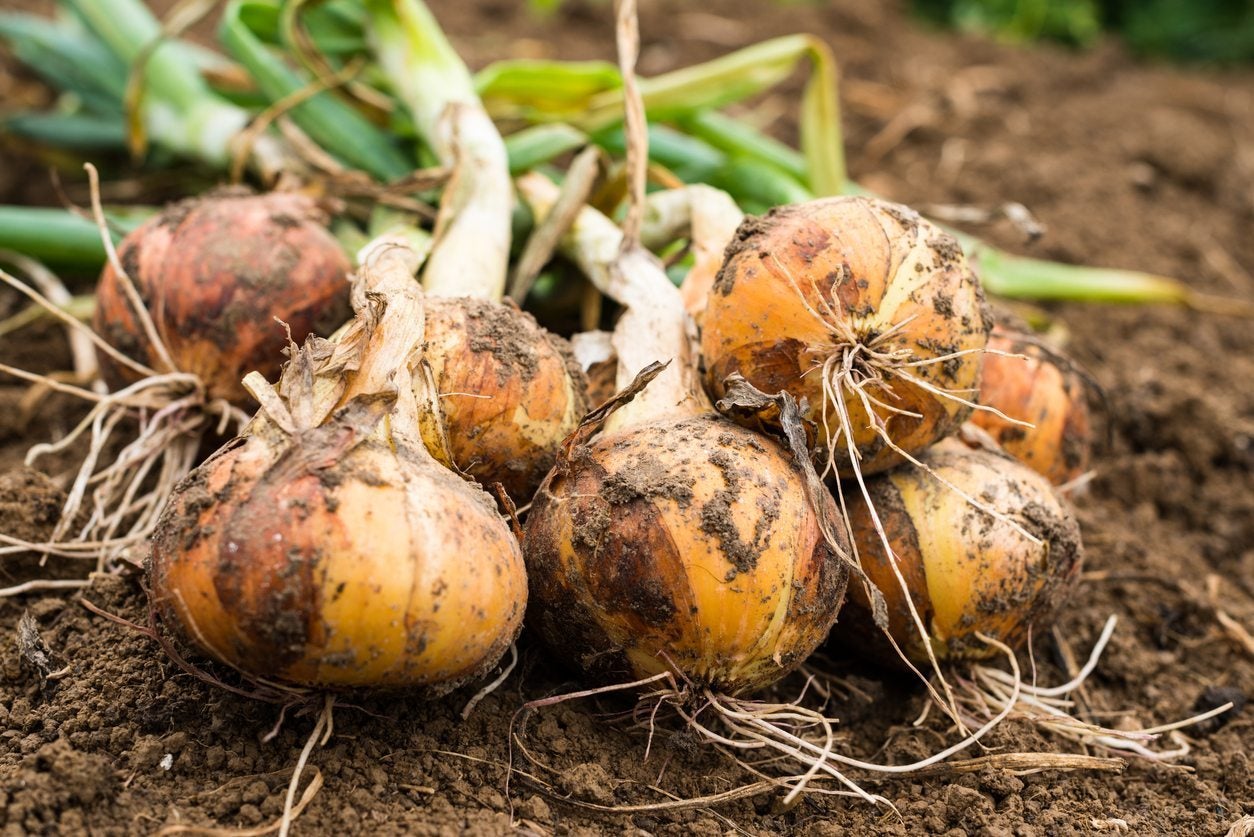Onions For Different Climates: A Guide To Onion Plant Varieties

You may think an onion is an onion is an onion – all good on a burger or diced into chili. Actually, there are many varieties of onion. To make it easier, onions have been categorized into three basic types of onions. Each kind of onion has attributes that make it the best type of onion for different regions or conditions. If I’m confusing you, read on for clarification of the kinds of onion plant varieties and the perfect onion for different climates.
About Onions for Different Climates
The three basic types of onions grown in gardens are short-day, long-day, and day-neutral. Each of these onion plant varieties is more suited to a particular region than another. For instance, in the north, from San Francisco to Washington, D.C. (zone 6 or colder), summer days are long, so you would grow long-day onions. In the south (zone 7 and warmer), summer days don’t swing much in length in comparison to winter days, so grow short-day onions. Day-neutral onions, sometimes referred to as intermediate, form bulbs in any USDA zone. That said, they are perfectly suited for zones 5 and 6.
Growing the Three Kinds of Onions
Short-day onions form bulbs when given 10 to 12 hours of daylight, perfect for southern regions. They require a mild winter climate in zone 7 or warmer. While they can be planted in northern locations, the bulbs tend to be smaller. Grown in warm climates, they mature within 110 days when planted in the fall. Cooler areas can expect maturity in about 75 days when planted in the spring. Short-day varieties of onion include:
- Georgia Sweet
- Sweet Red
- Texas Super Sweet
- Texas Sweet White
- Yellow Granex (Vidalia)
- White Granex
- White Bermuda
Long-day onions are planted in winter or early spring and mature in 90 to 110 days. They require 14 to 16 hours of daylight and are usually grown in the northern regions with a USDA of zone 6 or colder. This type of onion makes a great storage onion. Varieties of this type of onion include:
- Walla Walla Sweet
- White Sweet Spanish
- Yellow Sweet Spanish
Day-neutral onions form bulbs when exposed to 12 to 14 hours of daylight and are planted in the fall in mild winter climates and in early spring in northern climates. These super sweet onions mature in 110 days and are most ideal for USDA zones 5 or 6. A popular variety of day-neutral onion is the appropriately named Candy Onion but there’s also Sweet Red and Cimarron.
Gardening tips, videos, info and more delivered right to your inbox!
Sign up for the Gardening Know How newsletter today and receive a free copy of our e-book "How to Grow Delicious Tomatoes".

Amy Grant has been gardening for 30 years and writing for 15. A professional chef and caterer, Amy's area of expertise is culinary gardening.
-
 Looking For Plants To Give You The Soft And Fuzzies? Try These 5 Fuzzy Leaf Plant Options
Looking For Plants To Give You The Soft And Fuzzies? Try These 5 Fuzzy Leaf Plant OptionsLovers of texture, drama, silver foliage and tactile plants will adore these special sensory garden additions. These fuzzy leaf plant options will leave you all aglow
By Susan Albert
-
 Get Ready For A Summer Of Hummers! Grow These Full Sun Hummingbird Plants and Flowers
Get Ready For A Summer Of Hummers! Grow These Full Sun Hummingbird Plants and FlowersIf you’re lucky enough to enjoy a sunny backyard, make sure you are maxing out on your pollinator opportunities and grow these full sun hummingbird plants and flowers
By Tonya Barnett